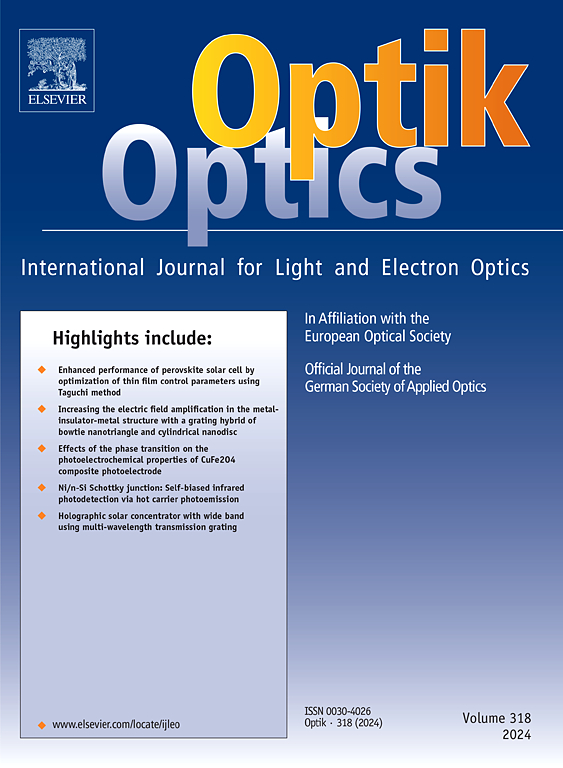Tunable photonic spin Hall effect on a hyperbolic crystal coated with graphene monolayer
IF 3.1
3区 物理与天体物理
Q2 Engineering
引用次数: 0
Abstract
In this article, we theoretically explore the photonic spin Hall effect (PSHE) observed in a light beam upon reflections from a graphene-based uniaxial hyperbolic crystal geometry. By applying appropriate boundary conditions to both the incident and reflected light beams, we derive expressions for the Fresnel’s coefficients of reflection for the - and -light beams. The presence of graphene introduces an additional degree of tunability, allowing precise control over the PSHE through its chemical potential and temperature, while the hyperbolic crystal allows modulation via the -axis orientation and reststrahlen band selection. Consequently, the transverse spin-dependent shift can be dynamically tuned by varying the chemical potential. Additionally, we reveal that the Brewster angle of the system is tunable via the orientation of the c-axis, with larger orientation angles leading to a reduction in spin-dependent splitting. The amplitude of the PSHE is significantly enhanced in the second reststrahlen band compared to the first reststrahlen band. Finally, we find that temperature effect has a strong influence on the PSHE, with the spin shift being markedly larger at zero temperature. These results suggest that graphene-integrated hyperbolic materials could enable advanced terahertz modulators and spin-based photonic devices.
石墨烯单层双曲晶体的可调谐光子自旋霍尔效应
在本文中,我们从理论上探讨了从石墨烯基单轴双曲晶体几何反射的光束中观察到的光子自旋霍尔效应(PSHE)。通过对入射光和反射光施加适当的边界条件,我们推导出了s光和p光的菲涅耳反射系数表达式。石墨烯的存在引入了额外的可调性,允许通过其化学势和温度对PSHE进行精确控制,而双曲型晶体允许通过c轴方向和限制波段选择进行调制。因此,横向自旋相关位移可以通过改变化学势来动态调节。此外,我们发现系统的布鲁斯特角可以通过c轴的取向来调节,较大的取向角导致自旋相关分裂的减少。相对于第一条带,第二条带PSHE的振幅显著增强。最后,我们发现温度效应对PSHE有很强的影响,在零温度下自旋位移明显更大。这些结果表明石墨烯集成双曲材料可以实现先进的太赫兹调制器和基于自旋的光子器件。
本文章由计算机程序翻译,如有差异,请以英文原文为准。
求助全文
约1分钟内获得全文
求助全文
来源期刊

Optik
物理-光学
CiteScore
6.90
自引率
12.90%
发文量
1471
审稿时长
46 days
期刊介绍:
Optik publishes articles on all subjects related to light and electron optics and offers a survey on the state of research and technical development within the following fields:
Optics:
-Optics design, geometrical and beam optics, wave optics-
Optical and micro-optical components, diffractive optics, devices and systems-
Photoelectric and optoelectronic devices-
Optical properties of materials, nonlinear optics, wave propagation and transmission in homogeneous and inhomogeneous materials-
Information optics, image formation and processing, holographic techniques, microscopes and spectrometer techniques, and image analysis-
Optical testing and measuring techniques-
Optical communication and computing-
Physiological optics-
As well as other related topics.
 求助内容:
求助内容: 应助结果提醒方式:
应助结果提醒方式:


